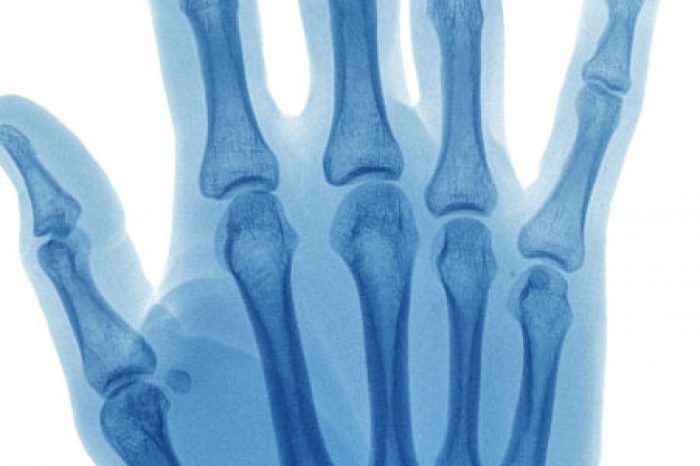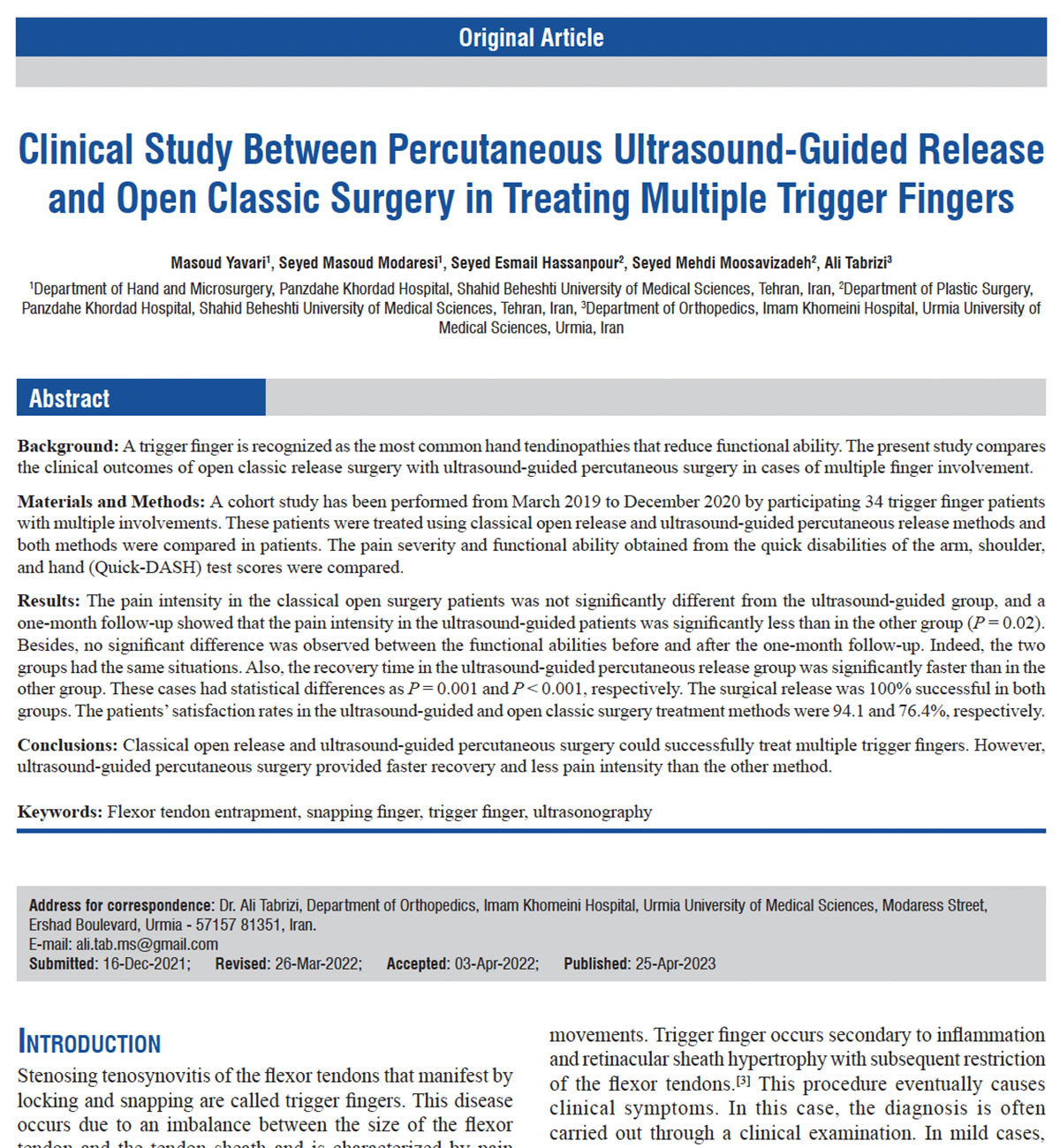

Trigger finger is characterized by locking and snapping of the fingers. The diagnosis is clinical and treatments are typically conservative, including physical therapy, medications and corticosteroid injections.
In cases that do not respond, surgery is often offered to patients.
Although open surgery is recognized as the standard operative treatment, it can cause scarring at the operation site, infection and nerve damage.
The percutaneous release is a modification that offers similar benefits with less scarring and faster rehabilitation.
Yavari et al. (2023) performed a cohort study, examining patients that underwent trigger finger releases in patients suffering from 2 or more fingers that failed conservative treatments. A total of 34 patients were enrolled in the study and evenly divided into a group that underwent a classical open release and a group that underwent a percutaneous release.

In the open approach a 15-20mm incision was made in the palm and after the release the incision was closed with nylon sutures. In contrast the percutaneous release was performed under local anesthesia and a 2mm incision was made and a release was made using CONMED's CTS Relief kit. The incisions was also closed with sutures. All patients underwent the same rehabilitation program.
All patients were examined at 10-days and 1-month from the surgery. At the 1-month follow-up the patients that underwent the ultrasound-guided release reported significantly less pain and the return to daily activity and recovery was significantly faster than in the open surgical release group.
There were no nerve or tendon injuries in either group, and the release was 100% successful in both cases. Patients reported excellent to good satisfaction in 94.1% of the ultrasound-guided release patients. Only 76.4% of the open surgical release group reported satisfaction, with dissatisfaction due to surgical scars and postoperative pain.
The authors found that both the classical open treatment and ultrasound‑guided percutaneous release groups were both effective in releasing the A1 pulley. However, patients with multiple trigger fingers (two or more fingers) reported more pain and a longer recovery with the open surgery method than after the percutaneous release method.
Yavari M, Modaresi SM, Hassanpour SE, Moosavizadeh SM, Tabrizi A. Clinical Study Between Percutaneous Ultrasound-Guided Release and Open Classic Surgery in Treating Multiple Trigger Fingers. Adv Biomed Res. 2023 Apr 25;12:88.
Learn about ultrasound-guided A1 pulley release for trigger finger treatment, a minimally invasive procedure with a 97% success rate and fast recovery time. This technique is safer and more effective than traditional
Read MoreTrigger finger, also known as stenosing tenosynovitis, is a common hand condition that affects the tendons in your fingers or thumb. If you're dealing with pain, stiffness, or a locking sensation in your fingers, you
Read More